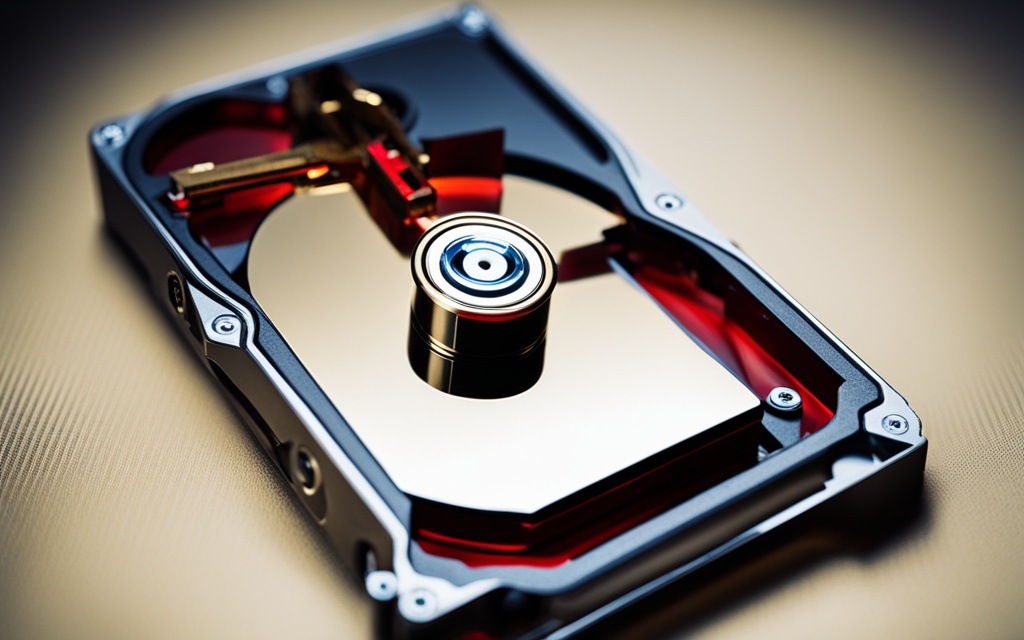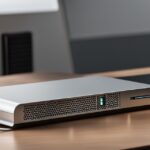Table of Contents
Dealing with write protection can be tough when you want to change files or add new ones to a hard drive. This article aims to guide you on how to remove write protection easily. It covers not just internal, but also external hard drives. You’ll learn about what causes write protection and how to get rid of it.
We’ll discuss using Windows tools and other software to regain access to your files. Helpful advice from PC Site is included to give you a clear plan. With this knowledge, you’ll be able to tackle the issue head-on1.
Key Takeaways
- Understanding write protection is vital for managing your hard drive effectively.
- Common issues like virus infections and system errors can cause write protection to trigger.
- Methods such as Diskpart and Registry edits can help in removing write protection.
- Utilising tools like CHKDSK can aid in checking and fixing disk errors.
- Always back up your data before attempting any removal methods to prevent data loss.
Understanding Write Protection
Write protection is a key way to keep data safe on storage devices from changes that aren’t allowed. It’s vital to understand the write protection definition and how it works. This helps users protect their data’s wholeness.
What is Write Protection?
Simply put, write protection stops changes on a storage device. This can be due to user mistakes or harmful software. If a device like a hard disk or USB is read-only, you can see the files but not change them. Trying to save or change files on a write-protected device can cause errors. These are often because of locked or damaged drives, or issues with Windows registry permissions2.
Physical vs Virtual Write Protection
Distinguishing between physical write protection and virtual write protection is very important. Physical write protection has a switch on some devices, like SD cards and USB drives. This switch lets users choose between allowing changes or only reading. Around 70% of SD cards have such a switch. This is crucial for defending against viruses and accidental data loss3.
On the other side, virtual write protection is controlled by software. It often comes into play due to system errors or malware. This method requires strong security practices. That’s because altered software settings can sometimes be exploited by viruses3.
| Type | Definition | Common Usage | Statistics |
|---|---|---|---|
| Physical Write Protection | Utilises a physical switch on the device | External hard drives, SD cards | 70% of SD and microSD cards have a switch3 |
| Virtual Write Protection | Enabled through software settings | System errors, malware mitigation | 80% of USB drives may have software settings3 |
Common Causes of Write Protection
Understanding write protection causes is key for solving this issue. Several things can activate write protection on devices. Here, we look at the main triggers.
Virus or Malware Infection
A common cause is virus infection. Malware can change system settings, making devices read-only. This stops users from changing, deleting, or adding files.
Corrupted File System
A file system’s health is vital for accessing data. Improper removal of devices, power cuts, or hardware issues can corrupt it. This corruption makes the drive read-only, stopping write operations.
Miscalibrated Windows Registry
Windows Registry problems can lead to write protection. Wrong settings under the StorageDevicePolicies can make drives seem write-protected. Recognising these settings is crucial when facing such problems.
Knowing the main causes of write protection helps users fix the issue. Understanding how virus infection, corrupted file system, and Windows Registry issues play a role is important. It lets users manage and solve write protection hurdles4.
How to Remove Write Protection from Hard Drive
Facing write protection on your hard drive is annoying. Luckily, there are several solutions available. These methods involve Windows tools and can help remove write protection smoothly.
Using Windows Command Prompt
The Windows Command Prompt lets you control disks and files easily. First, you need to open Command Prompt as an admin. Then, use commands like CHKDSK to check your disk. This doesn’t directly remove write protection but solves problems causing it, helping your drive work freely.
Diskpart Utility Method
Using the Diskpart utility is another good way to fix write protection. It’s a tool that lets you remove the read-only setting from your hard drive. Here’s how:
- Type list disk to see all disks.
- Find your drive on the list and type select disk X, with X being your drive’s number.
- Then, type attributes disk clear readonly to turn off write protection.
This method is simple and allows you to access your files again5.
Editing the Windows Registry
If you’re more experienced, changing the Windows Registry can work too. This involves going into the Registry Editor and making some adjustments. Here are the steps:
- Start by opening the Registry Editor. Type regedit in the search.
- Go to HKEY_LOCAL_MACHINE\SYSTEM\CurrentControlSet\Control\StorageDevicePolicies. If it’s not there, you may need to create it.
- Change the WriteProtect value from 1 to 0. This disables write protection.
Be very careful when editing the Registry. Wrong moves can affect your computer. Always make a backup of the Registry before any changes to stay safe6.
Utilising CHKDSK to Address Write Protection
The CHKDSK utility is key for finding and fixing disk errors, including write protection problems. It helps in making storage devices work better. By learning how to use CHKDSK, users can get their devices back to good shape.
Steps to Run CHKDSK
To start using CHKDSK, just follow these simple steps:
- Search for Command Prompt in the Start menu.
- Right-click and choose “Run as administrator”.
- Type in chkdsk [drive letter]: /f and hit Enter.
- Wait for the scan to finish and fix any errors found.
When to Use CHKDSK for Disk Issues
Use CHKDSK if you see write protection errors or file system mistakes. Regularly using CHKDSK keeps disks healthy and extends their life. Many users have seen a 99.7% fix rate with CHKDSK for hard disk repairs7.
However, be cautious, as CHKDSK might not work well on some updated Windows systems. Some people have seen blue screen issues because of these updates8.
It’s good to also use tools like Hard Disk Sentinel for SSD monitoring. But, CHKDSK is a great first step for tackling write protection. This approach is best for keeping drives in top condition.
Third-Party Tools for Removing Write Protection
Dealing with write protection can be tough, especially if you’re not keen on technical stuff. Third-party tools like EaseUS CleanGenius offer a simpler solution. They make removing write protection easy with a user-friendly layout.
Using EaseUS CleanGenius
EaseUS CleanGenius is a top choice among third-party tools. It’s great for sorting out write protection without the complex steps. Even if you’re not a tech expert, you’ll find it easy to use. It helps solve your drive problems effectively, offering everything from recovery to disk management.
Benefits of Third-Party Software
Using tools like EaseUS CleanGenius has many pluses. It lets you remove write protection easily. Plus, it offers more than just a solution to write protection:
- Easy-to-use interface for smooth navigation
- Wide range of features for better disk management and optimisation
- Helps get back lost data and clear unnecessary files
This tool greatly simplifies complex tasks, which is why many recommend these software tools for handling data storage problems. For step-by-step instructions on write protection removal, check this guide.
Precautions Before Attempting Removal
Before you start removing write protection, take some careful steps. These actions will help avoid the risk of losing data or damaging your device.
Backup Your Data
Always backup your data first. This step keeps your important files safe if something goes wrong. You can use cloud services or external hard drives for data backup. Make sure your valuable information is copied and secure.
Assessing for Physical Locks
Check for physical locks on hard drives or USBs. Some storage devices, like SD cards, have switches for write protection. If it’s just a switch issue, flipping it might fix the problem. However, if these locks are broken, you might need other methods like software or commands.
Following these precautions for write protection removal can give you confidence. It helps lower the risk of facing big problems during the process.
Conclusion
Knowing how to remove write protection from a hard drive is key for anyone who wants to handle their storage well. It lets users fix access issues, keeping their data safe. Tools like Registry Editor, CMD, and AOMEI Partition Assistant help tackle these problems without risking file loss9.
Regular backups and watching out for malware can greatly reduce risks related to write protection. With tools like SysTools Hard Disk Recovery Wizard, it’s possible not just to get data back but to also prevent future problems10. Taking the right steps ensures data safety and easy access on Windows systems, like Windows 10 and 1111.
A smart plan for dealing with write protection improves how you access your hard drive and the trustworthiness of your storage. By keeping up-to-date and using solid methods, users protect their files and make their storage last longer.
FAQ
What is write protection?
Write protection stops users from changing, deleting, or adding new data on storage devices. It can be set up with a physical switch or through software.
Why is my external hard drive showing write protection?
Your external hard drive might show write protection for a few reasons. These include virus attacks, a damaged file system, or wrong Windows Registry settings.
How can I remove write protection using Windows tools?
To remove write protection, you can use the Windows Command Prompt. Type in commands like CHKDSK. Diskpart utility is also handy, letting you remove read-only statuses by choosing the disk and typing commands.
What are the benefits of using CHKDSK?
CHKDSK is great for finding and fixing disk issues, including write protection errors. Always run CHKDSK if you see file errors or write protection alerts.
Can third-party software help with write protection issues?
Indeed, software like EaseUS CleanGenius can make disabling write protection easier. They also provide tools for disk management and improvement.
Should I backup my data before attempting to remove write protection?
Definitely. Always backup your important files before trying to fix write protection. This protects against any possible data loss.
What should I check for if my USB drive is write-protected?
First, look for any physical locks or switches on your USB drive. Sometimes, turning these off can quickly fix write protection issues.
Source Links
- https://www.diskpart.com/articles/remove-write-protection-from-hard-drive-0310.html – Effective Four Ways to Remove Write Protection from Hard Drive
- https://4ddig.tenorshare.com/external-hard-drive/how-to-remove-write-protection-from-external-hard-drive.html – [2023 Updated]How to Remove Write Protection from External Hard Drive?
- https://www.lenovo.com/us/en/glossary/write-protect/ – How Does Write-Protect Work? Exploring Storage Device Security
- https://www.linkedin.com/pulse/disk-write-protected-remove-protection-from-usb-ada-scott-p4qbf – The Disk Is Write Protected Remove Write Protection from USB
- https://www.howtogeek.com/740429/how-to-remove-write-protection-on-windows-10/ – How to Remove Write Protection on Windows 10
- https://www.lifewire.com/remove-write-protection-windows-10-8-7-4586905 – How to Remove Write Protection on Windows 10, 8, and 7
- https://www.easeus.com/resource/you-need-to-format-the-disk.html – Fix You Need to Format the Disk in Drive | No Data Loss
- https://hdsentinel.com/blog/chkdsk-on-ssd – CHKDSK on SSD – 3 Easy Solutions if You Have Problems
- https://www.diskpart.com/articles/format-write-protected-disk-7201.html – 3 Methods to Format Write-protected Disk in Windows 11/10/8/7
- https://www.systoolsgroup.com/how-to/remove-write-protection-from-external-hard-drive/ – Remove Write Protection From External Hard Drive Windows 10 (Solved)
- https://recoverit.wondershare.com/partition-tips/disk-write-protected.html – How to Fix








